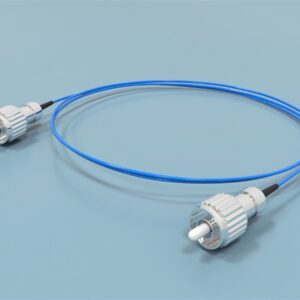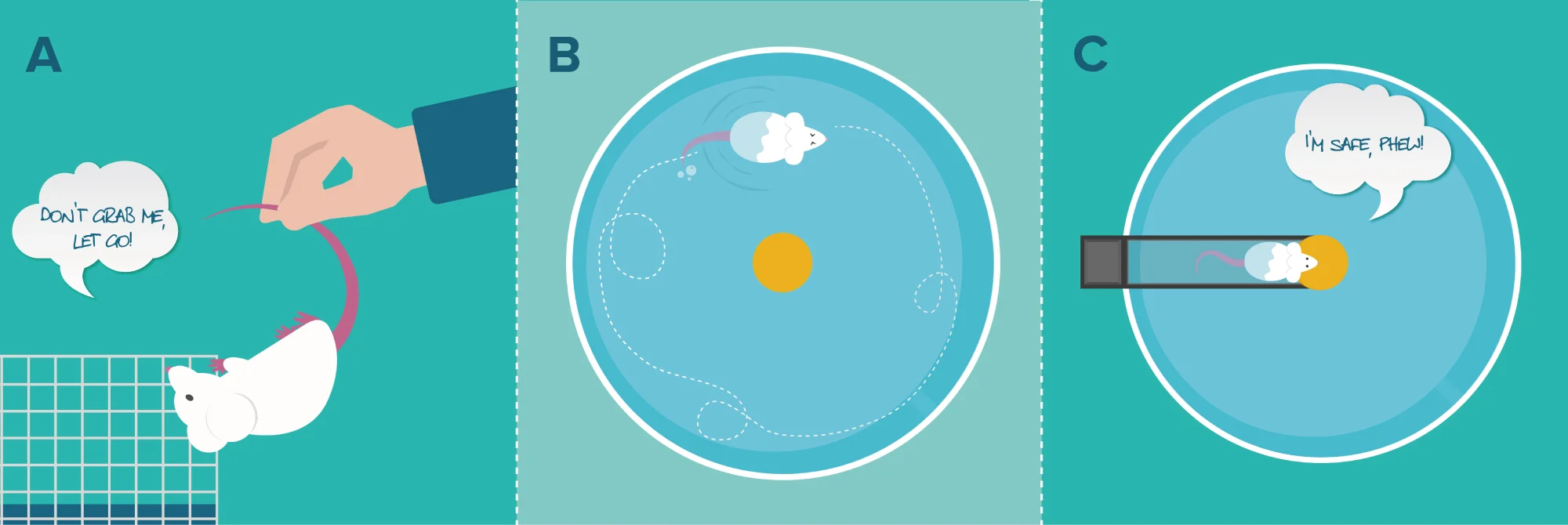The MazeEngineers Straight Swim Channel serves as a valuable tool in the training of mice and rats. With its design focused solely on facilitating straight swimming, rodents are relieved of the need for spatial discrimination while navigating through the channel. Typically, the escape platform is positioned at a raised location at the end of the alley, providing a clear objective for the subjects.

MazeEngineers empowers preclinical neuroscience research with meticulously designed, customizable behavioral apparatuses. From manual classic mazes to fully automated smart systems, we provide the tools scientists need to capture high-quality, reproducible data for studies on learning, memory, anxiety, and depression.

bool(false)



The Morris water maze and its various adaptations stand as pivotal tools in behavioral neuroscience, contributing significantly to contemporary advancements in the field. A notable enhancement to the conventional water maze protocol is the incorporation of the straight swim channel.
The straight swim channel serves as a valuable preparatory tool, enabling rodents to familiarize themselves with the fundamental swimming and platform-climbing procedures prior to the main experiment (Markowska et al., 1993). Beyond facilitating training, this channel also offers insights into swimming speed, a crucial metric for assessing equivalent motor capabilities across experimental groups and identifying potential motor deficits (Vorhees & Williams, 2006). Importantly, no spatial discrimination is required at this stage of the procedure. Instead, the MWM straight swim channel serves to acclimatize rodents to swimming while introducing the hidden platform as their means of escape.
The setup for the MWM straight swim channel comprises a tub with variable depths of 4, 5, or 6 feet, filled with opaque water, and a straight swim channel available in either full or half-length diameter, tailored accordingly. Engineered to offer rodents the most direct path to the escape platform, which is typically positioned at the end of the alley, submerged approximately one centimeter below the water’s surface, the platform’s placement depends on the length of the swim channel and can be situated either in the middle or at the edge of the tub. The apparatus, standardized at dimensions of 100 cm in length, 15 cm in width, and 26 cm in height, is securely affixed to the tub’s rim via its fitted ends.
Crafted from acrylic material, the straight swim channel serves the dual purpose of assessing swimming ability and facilitating pretraining. It is noteworthy that in prior research endeavors (Markowska et al., 1993), curtains were utilized around the tub during the initial straight swim procedure to eliminate visual cues intended for subsequent spatial discrimination tasks.
The versatility of the straight swim channel extends to numerous applications in behavioral neuroscience research. It serves as a valuable tool within general Morris water maze (MWM) protocols, facilitating the familiarization of subjects with fundamental task elements such as swimming and navigating towards the raised escape platform. Animal handling procedures can induce stress in rodents, often resulting in initial swimming behaviors along the edges of the tub as they strive to locate the escape platform. Without the aid of the straight swim channel, pre-training efforts can be time-consuming. Additionally, the straight swim channel enables the evaluation of swimming ability by assessing swimming speed, providing valuable insights into rodent motor capabilities.

Shaping and Assessment of Swimming Proficiency
At the onset of the experiment, the subject is positioned on the starting platform situated at one end of the alleyway, with the starting location potentially being any of the four quadrants within the tub. The timer initiates upon the subject’s immersion into the water and ceases upon reaching the escape platform at the opposite end. The principal aim of the pre-test phase is twofold: to instill proper protocol adherence in the subject in anticipation of subsequent Morris Water Maze (MWM) trials (wherein the straight swim channel will be omitted) and to furnish a comprehensive evaluation of swimming capability and motivation to escape the water (Vorhees & Williams, 2006).
Preliminary assessment plays a pivotal role in establishing motoric and motivational equivalency across experimental groups, thereby ensuring the integrity of subsequent MWM findings. Moreover, the utilization of the straight swim channel serves to mitigate the influence of extraneous variables on results and enhances the reliability of data interpretation.
Straight Swim Trials Analysis
Sample data analysis entails plotting the mean swim time of rodents across both lesioned and non-lesioned groups. Examination of the graph reveals a consistent decrease in swim time for both cohorts across successive trials, indicative of the rodents’ proficiency in navigating towards the end of the alleyway and accessing the escape platform safely. Notably, this trend underscores the acquisition of swimming routine by the rodents over the course of the trials.
Importantly, the observed lack of significant disparity in swimming ability between groups underscores the validity of the experimental setup. This finding suggests that both lesioned and non-lesioned rodents exhibit comparable swimming capabilities, affirming the reliability of the study’s results.
Strengths
The straight swim channel streamlines the training process for rodents participating in the general Morris water maze (MWM) procedure. By focusing the pre-training activity on straight swim maneuvers, rodents are directed towards locating the platform as their primary means of escape. Consequently, this approach significantly reduces the time required for rodents to traverse the expansive tub during initial pre-training sessions.
Moreover, the shaping process enhances the robustness of Morris water maze trials by mitigating the influence of extraneous variables prior to testing. Utilizing the straight swim channel ensures that performance in MWM trials serves as a more precise and sensitive indicator of place discrimination compared to procedures conducted without prior shaping.
Limitations
However, if not meticulously administered prior to testing, straight swim pre-training may inadvertently furnish crucial spatial cues to rodents regarding the location of the escape platform. This unintended provision of extraneous cues could potentially exert an unwanted impact on performance during subsequent trials. Therefore, careful consideration and administration of the pre-training protocol are essential to mitigate this limitation.
Markowska, A. L., Long, J. M., Johnson, C. T., & Olton, D. S. (1993). . Behavioral neuroscience, 107(4), 627.
Morris, R. (1984). Developments of a water-maze procedure for studying spatial learning in the rat. Journal of neuroscience methods, 11(1), 47-60.
D’Hooge, R., & De Deyn, P. P. (2001). Applications of the Morris water maze in the study of learning and memory. Brain research reviews, 36(1), 60-90.
Vorhees, C. V., & Williams, M. T. (2006). Morris water maze: procedures for assessing spatial and related forms of learning and memory. Nature protocols, 1(2), 848.
| Color | Black, Blue, Clear, Grey, White |
|---|---|
| Length | Full Length, Half Length |
There are no questions yet. Be the first to ask a question about this product.